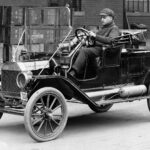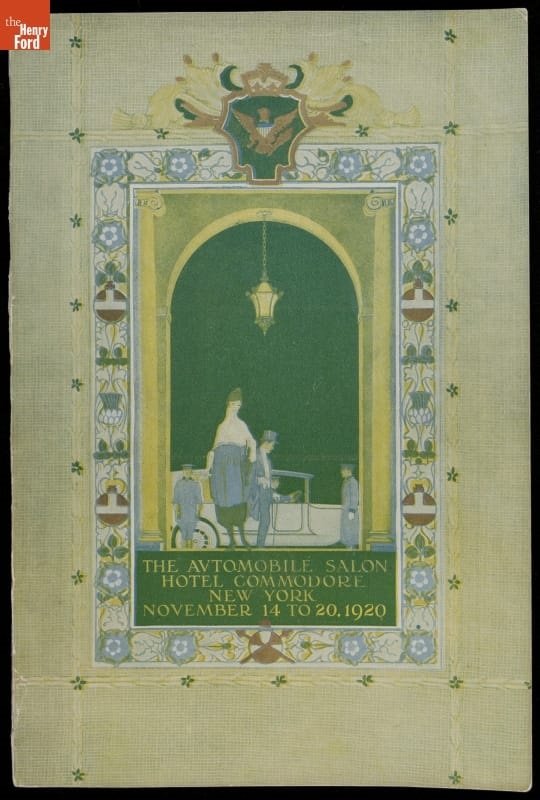
The prosperity of the 1920s led to new patterns of consumption for consumer goods like radios, vacuums, beauty products, and clothing. For many, this new pattern included cars.
Prosperity, coupled with the expansion of credit, put automobiles within reach of average Americans. Now individuals who could not afford to purchase a car at full price could pay for that car over time — with interest, of course. The price varied depending on the make and model, but a Chevrolet in the 1920s cost $525 (just under $8,000 today).
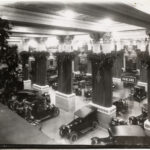 Henry Ford's revolutionary mass production lines enabled him to lower the Model T’s price from $850 in 1908 to
Henry Ford's revolutionary mass production lines enabled him to lower the Model T’s price from $850 in 1908 to 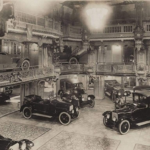 $300 in 1924, making car ownership a real possibility for a large share of the population. Soon, people could buy used Model Ts for as little as five dollars. That allowed students and others with low incomes to enjoy the freedom and mobility of car ownership. By 1929, there were over 23 million automobiles on American roads.
$300 in 1924, making car ownership a real possibility for a large share of the population. Soon, people could buy used Model Ts for as little as five dollars. That allowed students and others with low incomes to enjoy the freedom and mobility of car ownership. By 1929, there were over 23 million automobiles on American roads.
And where did Americans find their new car? Dealerships, as we know them, existed as far back as 1889. Fred Koller, an early innovator, sold cars manufactured in Cleveland, Ohio at his dealership in Reading, Pennsylvania. But for others, shopping for new wheels meant a "car salon."
Unlike conventional auto shows aimed at mass-market customers, smaller salon-style shows catered to an exclusive wealthy clientele. 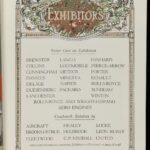 Exceptional American makes like Duesenberg, Packard, and Pierce-Arrow were featured alongside superb European brands like Delage, Panhard, Renault, and Rolls-Royce. Salons typically were held in posh hotels rather than raucous convention centers. Car salons were held at the Commodore and Waldorf Astoria hotels, among others.
Exceptional American makes like Duesenberg, Packard, and Pierce-Arrow were featured alongside superb European brands like Delage, Panhard, Renault, and Rolls-Royce. Salons typically were held in posh hotels rather than raucous convention centers. Car salons were held at the Commodore and Waldorf Astoria hotels, among others.
While the number of cars manufactured and sold skyrocketed, the number of active automobile manufacturers dropped from 253 in 1908 to only 44 in 1929. Of those, about 80 percent of the industry’s output accounted for by Ford, General Motors, and Chrysler, formed from Maxwell in 1925 by Walter P. Chrysler.
Fun fact: Henry Ford's Model T's nickname "Tin Lizzie" originated from two sources. “Tin” referred to the car's lightweight, durable metal construction, and “Lizzie” which was a popular slang nickname for a horse or mule. It was also sometimes called "Leaping Lena" or "flivver".